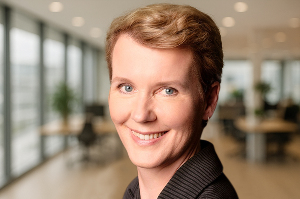
Westpac has upgraded its GDP growth expectations from 0.4% to 0.7% meaning a strong case for the RBNZ to leave the OCR unchanged at its July review.
Senior economist Michael Gordon says the bank is encouraged by the increasing breadth of the GDP upturn and most sectors are expected to report some modest growth.
This is coming from lower interest rates doing their work; a bit of the improving fortunes in the primary sector; a bit of the sustained recovery in international tourism; and, maybe, a bit of last year’s downturn simply not being as bad as reported.
Gordon says the main factor is New Zealand’s interest rate easing cycle being further advanced than most other developed economies, and that relief is gradually working its way through to households and businesses.”
Interestingly, the recent upturn has come at a time when the labour market has been soft, with employment basically flat.
“Putting the two together implies quite a strong rebound in labour productivity, with GDP per hour worked approaching its post-Covid boom levels.
“Have we somehow cracked our productivity problem?”
Gordon says more likely it reflects the usual lags in the labour market cycle.
The bank has heard in the past from businesses that they were reluctant to reduce staff numbers, as they were wary of being burned again by the severe labour shortages that were apparent a couple of years before.
“Consequently, it’s likely that many are finding themselves overstaffed even as demand picks up again,” he says.
Some informal polling at Westpac’s recent customer presentations suggests there’s limited hiring appetite, with a fair number looking to get more out of their existing workforce first.
Highs and lows
Westpac’s 0.7% growth forecast’s main points of weakness are expected to be in the public sector, specifically central government and healthcare – though its indicators in these areas have been less reliable in recent times.
The biggest positive contributions is an estimated 4.6% rise in non-food manufacturing and professional and administrative services.
While a pickup in the manufacturing sector wasn’t unexpected – the monthly manufacturing PMI has been perkier in recent months – the scale of it was a surprise, Gordon says.
Some of the rise was in metals manufacturing, with the Tiwai Point aluminium smelter ramping up again after having shut down some production while hydro lake levels were low last year.
But the biggest gain was in machinery and equipment manufacturing, with the survey showing a strong rise in both sales and in stocks of finished goods, implying that production was even stronger again.
“Putting the two together implies quite a strong rebound in labour productivity, with GDP per hour worked approaching its post‑Covid boom levels. ‘Have we somehow cracked our productivity problem?’”
Gordon says the other big positive is expected to be in professional and administrative services, where the activity data was surprisingly strong given the substantial and ongoing job losses in this area.
“That said, we don’t have a high level of confidence in the indicators for this sector.
“Elsewhere, we expect to see modest gains in areas such as construction, retail, wholesale trade, and arts and recreation.”
Aside from the government, Westpac expects most notable negative in its forecast is the electricity sector.
Low hydro lake levels became a concern again in the March quarter, with a shift back to higher-cost thermal generation.
Since GDP is a measure of value-added, this means a fall in real output even though total generation appears to have been up slightly.
Gordon says the bank also noted last quarter that some undesirable seasonality has crept into the GDP figures.
“That doesn’t affect March quarters much, adding only about 0.1% to our growth forecast.” However, it does present a risk that growth in the following quarter will be reported as weak or even negative, he says.





Comments
No comments yet.
Sign In to add your comment